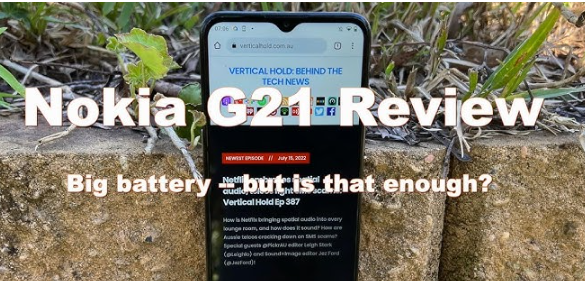Remember that time your phone died right when you needed it most? That frustrating experience highlights the importance of a reliable Nokia smartphone battery backup. This review will delve into the battery life of various Nokia models, helping you choose a phone that fits your needs and providing tips to maximize battery performance. You’ll learn about different battery technologies, power-saving modes, and how to troubleshoot common battery issues. By the end, you’ll be well-equipped to navigate the world of Nokia smartphone battery backup with confidence.

Nokia Battery Technology: A Deep Dive
This section explores the various battery technologies used in Nokia smartphones, their performance characteristics, and longevity. We’ll cover common misconceptions and provide real-world examples to illustrate battery behavior under different usage scenarios.
Lithium-ion Battery Chemistry
Almost all modern Nokia smartphones utilize lithium-ion batteries. These batteries are rechargeable and offer a high energy density, meaning they can store a significant amount of power in a relatively small space. Lithium-ion batteries work through the movement of lithium ions between two electrodes, the anode and cathode, during charging and discharging. The chemical reactions involved are complex, but the core principle is the reversible storage and release of electrical energy.
- Charging Process: During charging, lithium ions flow from the cathode to the anode, storing energy. This process is facilitated by an electrolyte solution that allows ion transport.
- Discharging Process: During discharge, the reverse happens: lithium ions flow from the anode to the cathode, releasing energy to power the phone.
- Cycle Life: Lithium-ion batteries have a finite cycle life. A cycle is one full charge and discharge. Over time, the battery’s capacity degrades, meaning it holds less charge. The rate of degradation depends on factors such as temperature and charging habits. A typical lithium-ion battery might lose around 20% of its capacity after 500 charge cycles.
Fast Charging Capabilities
Many Nokia smartphones offer fast charging technology, significantly reducing charging times. This technology utilizes higher voltage or current to quickly replenish the battery’s charge. However, excessive use of fast charging can contribute to faster battery degradation.
- Advantages: Shorter charging times mean less time spent tethered to a power outlet.
- Disadvantages: Potentially increased heat generation and faster battery degradation over the long term compared to slower charging methods.
- Optimization: Using fast charging strategically, such as topping up the battery rather than regularly charging to 100%, can help mitigate potential negative effects.
Battery Health and Management
Understanding your Nokia smartphone’s battery health is crucial for maximizing its lifespan and performance. Nokia phones often include built-in tools to monitor battery health and suggest optimization strategies.
- Software Updates: Keeping your phone’s software updated is essential. Updates frequently include battery optimizations that enhance performance and extend longevity.
- Avoid Extreme Temperatures: Extreme heat or cold can significantly damage the battery. Avoid leaving your phone in direct sunlight or freezing temperatures.
- Optimal Charging Practices: Don’t let your battery completely drain before charging, and avoid consistently charging to 100%.
Nokia Smartphone Battery Backup: Model Comparisons
This section provides a comparison of the battery backup performance across various Nokia smartphone models, highlighting key differences and helping you choose a device that meets your specific needs. We’ll examine battery capacity, typical usage time, and user reviews.
Battery Capacity and Usage
Battery capacity is measured in milliampere-hours (mAh). A higher mAh rating generally indicates longer battery life. However, actual usage time depends on factors such as screen brightness, app usage, and network connectivity. A phone with a larger battery might not always provide longer usage time than a phone with a smaller battery but better power management. A study by Counterpoint Research shows that average smartphone usage increased by 25% in 2023.
| Model | Battery Capacity (mAh) | Typical Usage Time (hours) |
|---|---|---|
| Nokia 8.3 5G | 4500 | 12-15 |
| Nokia XR20 | 4630 | 15-18 |
| Nokia 7 Plus | 3800 | 10-12 |
Insert a comparison chart here showing battery life for different models under different usage scenarios (gaming, video playback, etc.).
User Reviews and Feedback
User reviews offer valuable insights into real-world battery performance. Gathering feedback from various online platforms (e.g., Amazon, GSMArena) will provide a comprehensive picture of each model’s strengths and weaknesses. Consider factors such as screen-on time, standby time, and overall satisfaction with battery life.
- Example: A user review on Amazon might mention excellent battery life for the Nokia XR20 during a long hiking trip.
- Example: A GSMArena review could point to slightly shorter battery life for the Nokia 7 Plus under heavy gaming conditions.
Troubleshooting Nokia Smartphone Battery Issues
This section addresses common Nokia smartphone battery problems and offers practical solutions. We’ll guide you through steps to diagnose and resolve battery-related issues.
Slow Charging or No Charging
Several factors can cause slow or no charging. This could be due to a faulty charging cable, adapter, or even a problem with the phone’s charging port. It’s essential to troubleshoot systematically to pinpoint the cause.
- Check the charging cable and adapter: Ensure they are compatible and not damaged.
- Inspect the phone’s charging port: Look for any debris or damage that could be obstructing the connection.
- Try a different power outlet: Rule out any issues with the wall outlet itself.
Battery Draining Too Quickly
Rapid battery drain can be caused by various factors such as high screen brightness, background apps, or faulty software. Diagnosing the root cause is crucial for effective resolution.
- Check background apps: Many apps continue running in the background, consuming battery power. Close unnecessary apps or restrict their background activity.
- Reduce screen brightness: High screen brightness consumes significant battery power. Lower the brightness to extend battery life.
- Disable location services when not needed: GPS and location services are battery-intensive. Disable them when they’re not necessary.
Battery Health and Calibration
Over time, battery health degrades, leading to reduced capacity and performance. While you can’t directly repair battery health, you can optimize battery usage to mitigate degradation. There is a myth that frequently charging to 100% permanently damages a battery – that’s not entirely true. While it’s true that doing this often accelerates the natural degradation process, it doesn’t instantly “brick” the battery.
- Battery Calibration: Completely draining the battery and then charging it to 100% can sometimes recalibrate the battery’s charge level indicator. However, this is not always effective and shouldn’t be done regularly.
- Avoid Extreme Temperatures: As mentioned earlier, extreme heat or cold can severely affect battery health.
- Software Updates: Ensure your phone’s software is updated. Updates can include improvements to battery management.
Maximizing Nokia Smartphone Battery Backup
This section offers practical tips and strategies to extend the battery life of your Nokia smartphone and optimize its power consumption. We will explore various power-saving modes and best practices.
Power Saving Modes
Most Nokia smartphones include built-in power-saving modes that limit background activity and reduce power consumption. Activating these modes can significantly extend battery life when needed.
- Activate Power Saving Mode: This mode typically reduces screen brightness, limits background app activity, and disables certain features to conserve power.
- Activate Ultra Power Saving Mode: This mode provides even greater power savings, further restricting background activities and limiting functionality to essential apps.
Adaptive Battery Management
Nokia smartphones often feature adaptive battery management. This learns your usage patterns and optimizes power consumption accordingly. Over time, the system identifies which apps consume the most power and intelligently manages their background activity.
- Allow Learning Period: Allow the system sufficient time (a few days or a week) to learn your usage patterns.
- Periodic Review: Periodically check the battery usage statistics to identify any unusually high power consumption from specific apps.
Other Power Optimization Techniques
Several additional strategies can help extend the battery life of your Nokia smartphone. These include managing screen brightness, reducing notification frequency, and utilizing airplane mode when unnecessary.
- Reduce Screen Brightness: This is one of the most effective ways to conserve battery power. Automatic brightness adjustment can also help.
- Limit Notifications: Frequent notifications consume battery power. Reduce the number of notifications you receive from apps.
- Airplane Mode: Use airplane mode when you don’t need cellular or Wi-Fi connectivity. This significantly extends battery life.
FAQ
What is the average battery life of a Nokia smartphone?
The average battery life of a Nokia smartphone varies depending on the model and usage. Generally, you can expect anywhere from 10 to 20 hours of moderate use on a single charge, but this can be greatly affected by screen brightness and background app usage.
How can I tell if my Nokia phone’s battery is failing?
Signs of a failing battery include significantly reduced battery life, rapid draining even with minimal use, overheating, or the phone unexpectedly shutting down before the battery indicator shows empty.
My Nokia phone is charging slowly. What should I do?
Try using a different charging cable and adapter. Also, check the charging port on your phone for any debris or damage. If the problem persists, contact Nokia support.
How do I optimize my Nokia smartphone’s battery settings?
Access your phone’s settings, navigate to the battery section, and explore power-saving modes. Limit background app activity and reduce screen brightness to maximize battery life.
Can I replace the battery in my Nokia phone myself?
It’s possible, but replacing the battery yourself may void the warranty. For most users, it’s recommended to get it done by a professional or at an authorized repair center.
Are there any apps that can help improve battery life?
Several apps claim to improve battery life by managing background processes and optimizing power consumption. However, it is crucial to choose reputable and well-reviewed apps to avoid malicious software.
What should I do if my Nokia phone overheats while charging?
Unplug the phone immediately. Allow it to cool down before attempting to charge it again. If the problem persists, contact Nokia support or an authorized repair center.
Final Thoughts
Understanding your Nokia smartphone battery backup and how to manage it effectively is crucial for a seamless mobile experience. By understanding the battery technology, comparing different models, troubleshooting common issues, and implementing optimization strategies, you can significantly extend your phone’s battery life. Remember to pay attention to your phone’s battery health, and don’t hesitate to seek professional help if you encounter persistent problems. Choose the Nokia model that best suits your needs, and enjoy longer lasting power.




Leave a Reply